How to manage the evolving demands of customers in an ever increasingly competitive market
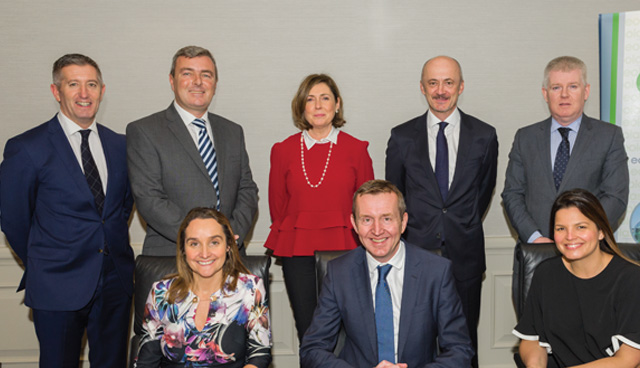

Business process management provider Abtran hosted a round table discussion on how digital technology can be used to meet the evolving demands of citizens and customers.
What are the key opportunities for your organisation in digitising administrative services?
Patricia Kane
We are looking into new technologies such as Live Chat and Automation as well as improving processes such as the verification of new customers. One of the biggest opportunities is to get KYC [know your customer] right and mainly for those customers abroad. In UK and Ireland, the vast majority of customers pass KYC automatically. However, there is a lot of room for improvement in other countries. This is one of our biggest challenges but also a massive opportunity. We also want to be able to automate some of our most trivial customer service processes: What time does a shop open? Can I have a free bet? and let agents focus on more complex and relevant queries. Today, trivial queries take time to be answered and the experience could certainly be improved.
Philip L’Estrange
To date we have digitised the majority of our administrative services. For example, we have a digital grant management system that enables entry and processing of grants to other agencies. Customer requests for timetables, arrival times and journey planning are digitally available via apps, website and digital displays at stops.
Measuring bus punctuality is made simpler and more accurate through AVL (Automatic Vehicle Location) technology. The linking of taxi drivers to vehicles is now a fully digital online service and available to the public through our Taxi Driver Check App. The purchase of leap cards and top-ups are also now fully digitised via website and mobile app.
However, we continually look to see if business processes can be digitised and there are a number of further opportunities where we are planning development of digital workflows including electronic tendering, bus licensing systems, online availability of the Authority’s Traffic Modelling to local authorities across the country, HR and other internal transaction flows.
Brendan Nevin
On the insurance side of our business it has been a requirement rather than an opportunity. It is an industry with a significant pricing pressure, so if you don’t leverage those same technologies to reduce your cost base you are quickly going to find yourself uncompetitive.
We have done quite a few big things from the back office right through to the front end. In the back office we have taken out a lot of documentation and now have electronic documents which the customer can store online. We routinely don’t send out documentation unless it is requested. In the customer journey we have digitised pricing which is now automated. Once you go onto the website customer details automatically flow through to the contact centre and outbound sales teams. That has taken cost out of the business. We are now exploring using some of these same technologies on the roadside business where we are automating deployment. If a roadside member rings the closest patrol, the right equipment will be dispatched automatically. That has not only taken out costs, it has improved the customer service as well.
Michael Fitzgerald
Key opportunities for organisations to digitalise administrative services include the mandatory requirement to access services digitally, putting incentives in place for customers to follow a digital route and putting mechanisms in place to make it easier to access services digitally. In the public sector the mandatory use of the public services card has created an opportunity to digitalise access to government services from the very first engagement. We are deploying remote identity solutions that make it easier to apply for services, for example we are digitalising the KYC process so that customers can open a bank account remotely with three easy steps. We are also seeing significant opportunities to reduce the administrative burden with connected devices, particularly with the advent of smart homes, smart cities and connected cars. The increased use of these devices by customers is fundamentally changing the way we engage and add value to customers. Connected devices are also creating lots of opportunities to create synergies between our clients as we continue to serve a common customer.
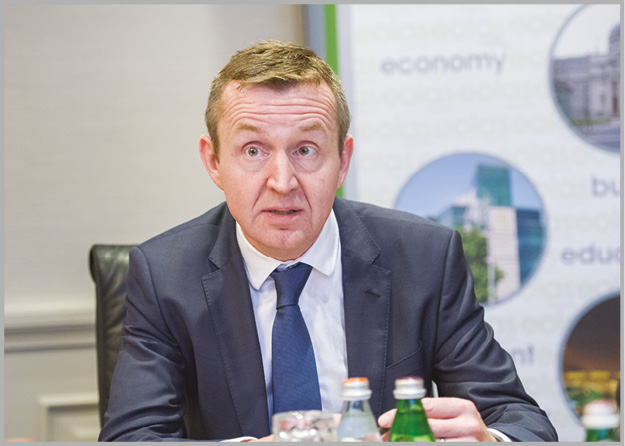
“The public service card has created a great opportunity to personalise the customer experience.”
Michael Fitzgerald
Anne Sheehan
Digital has been transformational for the telecommunications industry; from the back-end processes to customer contact. We have plotted our customer journeys and have delivered efficiencies at the back end by allowing customers to deal with us in a more customer-focused, efficient manner. We see this as a real differentiator. We know the customer no matter what channel they access. We can then predict their needs and can route them to the right person.
A large percentage of our customers now use our app to top up or access other services. This has been transformational for our customers and our own technology teams. Digital has enabled better use of data. It is also a big cultural change. Our mission is to be ‘digital first’ and that means working in a different, more agile customer-focused way. This is also critical from a commercial perspective as adopting digital technologies frees up opex that is then reinvested into the business: technology, data and people. This allows us to modernise our operations and differentiate the experience we offer to our customers.
Denise Barry
RSA has ambitious targets as laid out in our corporate plan. Our mission is to make our roads safer and the plan has five main strategic propositions: customer services, our people, our capability to deliver, how we work collaboratively with stakeholders and partners and how we are using data to make our road safety interventions more effective. There are huge opportunities for us to digitise our administrative services across the whole organisation. Digital is about efficiency, effectiveness and reducing costs.
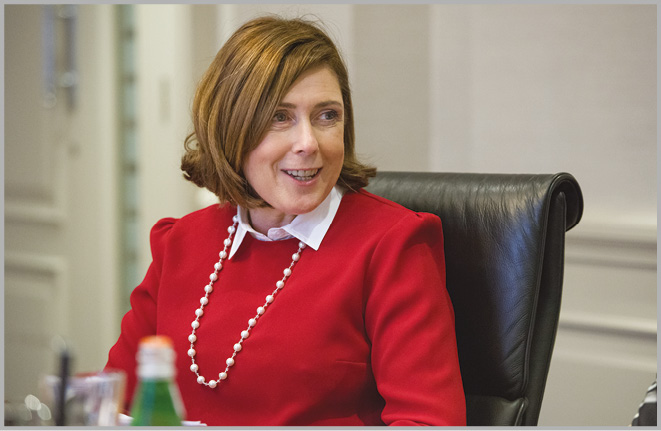
“Digital is about efficiency, effectiveness and reducing costs.”
Denise Barry
What technologies have you adopted to make engagement with customers more efficient?
Anne Sheehan
We are investing in new evolving customer-facing technology including Artificial Intelligence (AI) and machine learning. Tobi, our AI chat bot, was launched as proof of concept recently with the ability to answer certain routine queries. This frees up agents to deal with more complex queries. The objective is to answer the query as quickly as possible and to get it right first time. It means our services are now more personalised and effective. We are working with Adobe and Oracle on an app for transactions that makes the customer journey seamless and simple. We also have an internal service desk chatbot for our service teams which enables employees to quickly and easily self-serve for things like forgotten passwords and that frees up the IT service desk for more complex, value-added tasks. Technology and data are transforming our industry. It will also allow new entrants into all industries and that is something that keeps us constantly innovating. The most important aspect is the cultural change as digital innovation is about combining the human and technology side effectively.
Brendan Nevin
In an industry like insurance, it has been about understanding the value creation and economics at different points in the customer journey as the value at stake tends to be quite different from other industries. You can have high amounts of value at stake on a single phone call. Part of the challenge in our industry is that customers are resisting completely digital solutions. They want to be able to talk to someone, particularly if there is a problem. That is still an issue in financial services, particularly in Ireland compared to other countries. Our challenge is to bring all our channels together and try to reduce the amount of telephone contact as it is the telephony has gone up with the calls per quote doubling over the last three years. In the long term this should reduce with the move towards digital channels.
Michael Fitzgerald
We have invested heavily in online learning management. Our focus is on empowering our employees to take ownership of their own personalised development journeys and to create the conditions where they have easy access to a great digital learning experience. In addition, we are customising our e learning solution within the highly regulated industries we serve across government, financial services and energy. We are currently developing applications where we are applying artificial intelligence and chat bots to enhance the learning experience. We see a symbiotic relationship between customer advisors and chat bots where the learning experience is continuously improving and ultimately customers are receiving a better service.
Philip L’Estrange
The public transport customer is at the heart of everything we do and customer communication channels are therefore very important to us. We have introduced a CRM system to efficiently manage customer contacts. We are active on social media, offering direct and up-to-the minute dialogue with customers. Our customer-facing websites offer an easy-to-use digital form to customers wishing to give feedback. The database behind this form channels queries directly to the right person for direct response. Smartphone applications have been the single biggest development to improve transport information for the general public. The NTA’s Real Time App, National Journey Planner App and Leap Top-Up App have revolutionised people’s experience of public transport in Ireland. In addition to the real-time signage at key bus stops across the country, we have installed RTPI large flat screen departure boards in large general public circulation areas e.g. hospitals, universities, rail stations etc. We continue to investigate new technologies and are currently working on designing the next-generation of public transport information systems which may include newer technologies such as auto-bots, robotics and deeper personalisation tools for customers to plan and pay for their journeys.
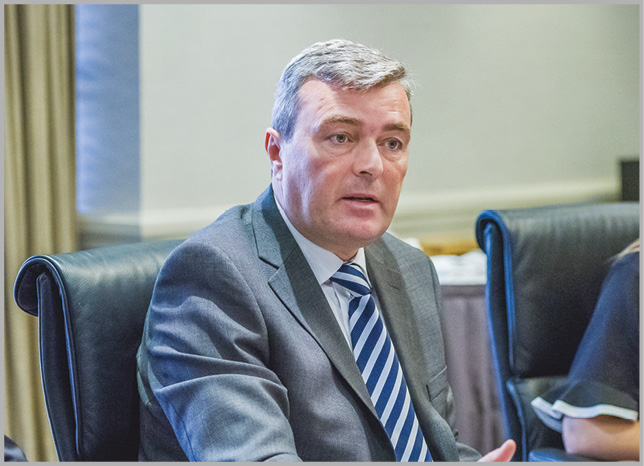
“We find that we can reach our customers more frequently and effectively by using new technology channels.”
Philip L’Estrange
Patricia Kane
All bookmakers have broadly similar offerings. We believe that companies that are excelling in the new differentiation landscape realise that what they offer goes far beyond their product and promotions. It comes down to service, customer expectations and a level of trust that you can deliver what you promise on a consistent basis. We always strive to get things right, first time. Top of the list is personalising the experience. Everyone knows there are several matches happening on Saturday but if I know that my team is playing on Saturday and my offers are tailored around that, that’s a different ball game. We also have two big events in the year; Cheltenham in March and the Grand National in April. We noticed some customers had been with us for years but were not betting during that period. We realised that their credit cards had expired so we ran a campaign, ‘Cheltenham is coming and we have noticed your card has expired…’ to get them going again. This was a very successful digital intervention.
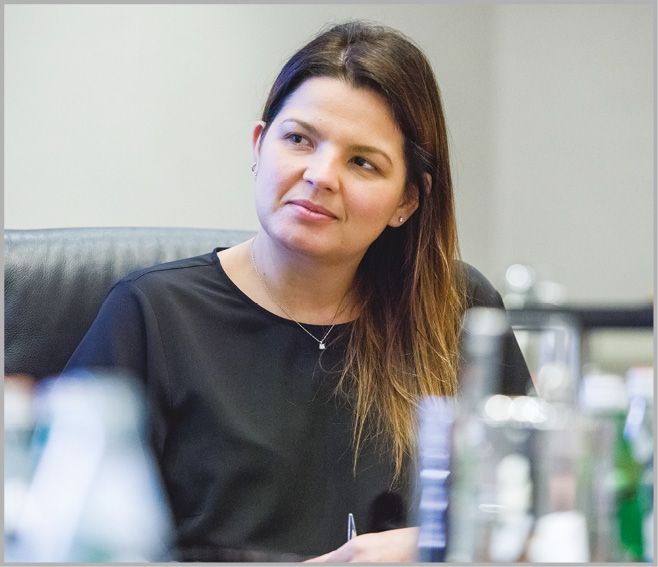
“This is not a choice and needs to be done for competitive advantage.”
Patricia Kane
Denise Barry
We have adapted numerous technologies to make engagement with customers more effective including online services, utilisation of SMS and IVR, customer portals, look up apps.
In the area of commercial vehicle testing and enforcement we have introduced a centralised system which captures testing conducted at the 140 commercial vehicle test centres and RSA enforcement activity. The system has enabled efficiency and consistency in the standard of testing. It has also supported a more risk based approach to enforcement, so that disruption to compliant operators can be minimised. From this we have created a portal for commercial vehicle customers where they can book tests online and can look up their test and enforcement history. Internally we have given our roadside people look-up apps so they no longer have to ring into the office for information about a vehicle.
Online services must be accessible and provide a better service to customers. This can be achieved even where documentation has to be submitted separately, such as, with the tachograph system where the uptake is greater than 90 per cent, where differential pricing and faster processing times bring customers online and in turn reduces cost.
A key area for us is safety awareness campaigns where it is important to get the right message to the right people at the right time. We use a mix of traditional broadcast media and digital/social media and that works very effectively and ensures greater accessibility to our services. With video on these platforms, our customers don’t have to struggle with booklets even for more complex areas such as vehicle maintenance and regulations.
Does your organisation employ Artificial Intelligence (AI) to engage with customers or can you see an opportunity for it in the future? And how do you balance evolving customer demands with the costs of new technology channels?
Patricia Kane
Meeting the needs of evolving customer demands, including Artificial Intelligence, is not optional. If you don’t do it your business will quickly become irrelevant. This is not a choice and needs to be done for competitive advantage. Customers are drawn to the innovators with the best options and experience. We are evaluating AI via Automation and Chat Bot solutions but again, there’s no algorithm for emotions. Therefore, you will always need people on the end of the line. We want to turn our agents’ work into something more meaningful as they end up dealing with non-trivial questions from customers.
Philip L’Estrange
We have piloted traffic light prioritisation (TLP) at a small number of junctions. This is machine to machine communication and decision making using AI with to improve traffic flow at major junctions. Another is around data security and fraud detection. We are using machine learning to detect anomalies in data to identify and prevent security breaches. Currently we use a SIEM [Security Incident and Event Management] tool that detects anomalies in the environment, such as multiple log-in attempts, and flags potential offences.
Generally, we find that we can reach our customers more frequently and effectively by using new technology channels. Products such as LEAP, RTPI, National Journey Planner and LocalLink in rural areas requires investment across a number of technology channels such as web, mobile, social media and apps. However, they contribute to much a more enhanced customer experience which in turn increases reliability and patronage of our public transport services.
We are also planning ‘Next Generation Ticketing’ which will see a step change in how our customers can seamlessly interact with us to obtain the best value for money fares over a variety of technology channels.
Denise Barry
So far, our focus has been on process automation and automated checks. Our plan is for the digitisation of our administrative services to free up our people for higher value activities which will make us even more effective and deliver better customer service. As we progress on the delivery of our corporate plan, we will be looking at further innovation.
Brendan Nevin
If AI is defined as self-learning technology we are not yet using it. But we have fully automated our roadside deployment system. The customer can contact us through an app and the system locates them and knows what type of vehicle they have and the probability of repair. It will then despatch the nearest relevant patrol. We have people overseeing the system but it is fully automated.
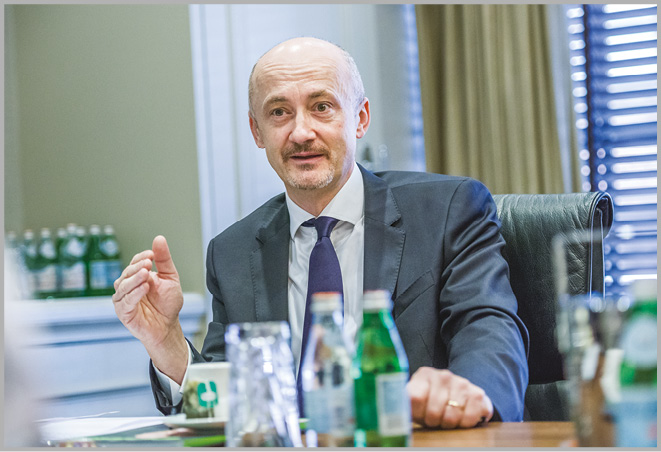
“Part of the challenge in our industry is that customers are resisting completely digital solutions.”
Brendan Nevin
Anne Sheehan
We see AI being a critical component of our care solution. By blending the best of AI and the best of human interaction, we can really deliver a better customer experience. Not all customers are the same; we have 12 year-olds with their first phone and 90 year-olds so we need to be able to personalise the digital experience. We also need to be mindful how we need to change to really get benefit from AI. For example, AI has to learn and be taught. You have to work hard at setting up the machine so that it understands regular patterns of what customers are asking. Culturally, it has been quite a change and in terms of productivity it does the simple tasks really well. However, we will always need the human side of the digital experience. Balancing customer demands with the costs of new technology channels is always a challenge and it’s important that we stay competitive while also investing in technology and big data.
Michael Fitzgerald
We are currently exploring a number of AI solutions including the automation of repetitive customer interactions and using chat bots to enhance the learning experience for our customer advisors. We see lots of opportunities to use AI to serve customers particularly in regulated industries.
Brendan Nevin
A good example of that is the Scandinavian banks, who were much more advanced digitally than the banks here. They achieved very high levels of digital transactions in the early 2000s and ended up closing most of their branches. This was soon followed by a fall in sales. They no longer had any personal relationships with their customers. While customers were prepared to do routine transactions online, they were not happy to buy mortgages or investment products online.
What is the biggest challenge for your organisation in the next few years, particularly with personalising the customer experience?
Denise Barry
We want to move to a seamless customer journey over the breadth of our services. For example, currently, if you are a learner driver and you want to get a license you have to go through several separate stages and processes to do that. At the moment, you must be reauthenticated several times and you have to submit papers each time and that is very disjointed. We want to make this seamless. It will improve the customer experience and help us manage demand and forecast capacity. We have some services online and plan to have the National Driver License Service online within the next 12 months. We are currently putting the foundation in place to deliver on the overall integrated customer journey through the development of a target business and technical architecture.
Anne Sheehan
Technology has put customers in control, their expectations are changing and they now want to interact with businesses anywhere and anytime. We see this as a big opportunity. By putting the customer at the core of everything we do it has forced us to change our business model and the way we operate. It has made us more agile and changed our attitude towards technology – it takes away the idea that every IT project should cost ⇔20 million and take 20 years. The new people that we have brought into the organisation to work on digital have been amazing. I have learned so much from them. It is absolutely refreshing and it has made us think differently and constantly look towards innovating around our customer needs.
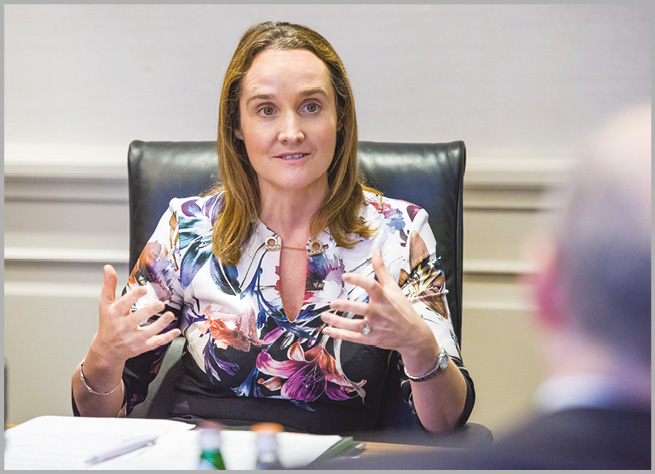
“Digital has been transformational for the telecommunications industry; from the back-end processes to customer contact.”
Anne Sheehan
Michael Fitzgerald
For the public sector, the public service card has created a great opportunity to personalise the customer experience. The RSA are leading the way in the adopting the use of the card for the renewal of driving licences. By making it easier to renew driving licences it will increase compliance and ultimately increased compliance will result in safer roads and reduced insurance costs.

Participants
 Denise Barry
Denise Barry
Denise Barry is Director of Strategy, Policy and Technology with the
Road Safety Authority. Denise’s role includes oversight of the delivery of the RSA’s Corporate Plan for 2016-2020. Denise has worked with the Road Safety Authority as a Director since 2007 and previously, in the role of Director of Vehicle Standards and Enforcement where Denise oversaw the introduction of several reforms to improve service delivery focussing primarily on road safety and delivering excellent customer service.
 Michael Fitzgerald
Michael Fitzgerald
Michael Fitzgerald is Founder and Director of Abtran and has played an essential role in establishing Abtran as Ireland’s leading business
process management provider, since its formation in 1997. Working with organisations across energy, financial services and the public sector, Michael’s focus is on the development of longer term transformative service solutions, which creates efficiency and enhances services for customers.
 Patricia Kane
Patricia Kane
Patricia Kane is the Director of Customer Experience for Paddy Power Betfair plc, providing strategy and skills to drive customer centricity within their business. She has held senior roles in large telecom groups such as America Movil, Telecom Italia, and Digicel Group, and has been part of the PPB family for over five years. Patricia also chairs ‘Fair Game’, PPB’s diversity and inclusion programme.
 Philip L’Estrange
Philip L’Estrange
Philip L’Estrange is Director of Finance & Corporate Services, National Transport Authority. He has responsibility for finance, customer experience, ICT, procurement, HR and legal affairs. He has 15 years’ experience in a variety of public sector bodies, prior to which he held a number of senior positions with Intel Ireland. Philip holds a BComm, an MBA, an MSc in Digital Innovation, and is a Fellow of the Institute of Chartered Management Accountants.
 Brendan Nevin
Brendan Nevin
Brendan Nevin is Chief Executive Officer, AA Ireland. He joined AA Ireland in March 2011 following a number of senior management roles in Ireland and internationally at Bank of Ireland, Eircom, Coca-Cola HBC and International Distillers. Brendan has extensive experience of managing customer facing businesses and was COO of AA UK until its’ flotation in 2014. He subsequently led the sale of AA Ireland to Cardinal Carlyle in 2016. He is a non-executive Director at Code Institute and until recently was Deputy Chairman at Rehab Group.
 Anne Sheehan
Anne Sheehan
Anne Sheehan is Enterprise Director, Vodafone Ireland. She joined Vodafone Ireland, the country’s leading total communications provider in September 2013, bringing with her 16 years of experience in the ICT industry from IBM where she held the role of Vice President of Sales for the Nordic Region. Prior to this, she was the Sales Director for IBM Ireland and also held a variety of senior positions. A native of Clare, Anne holds a Degree in Business Studies, specialising in Accounting and Finance, and a Graduate Diploma in Computers, both from the University of Limerick.





